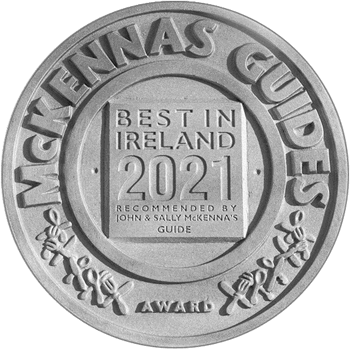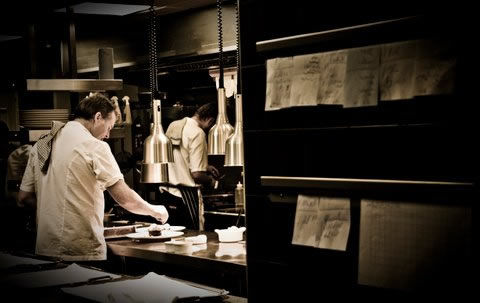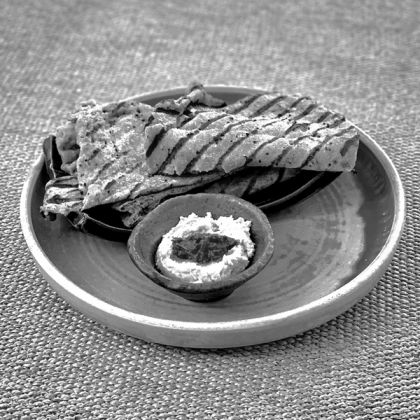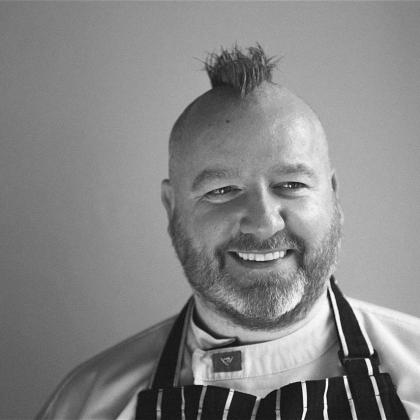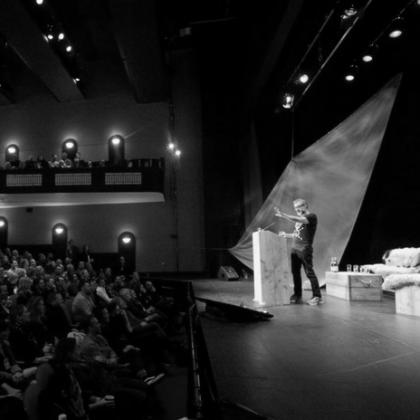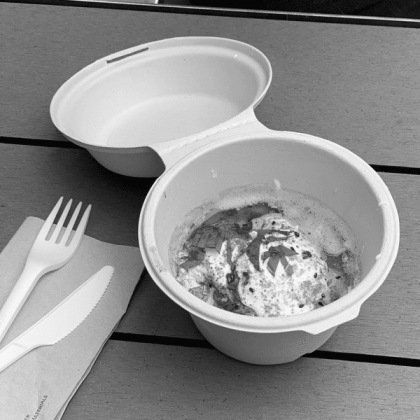It is an enormous luxury to be allowed write 1,200 words in a restaurant review, as we were asked to do for the sublime American quarterly, The Art of Eating. So here is a look at 17 years or so of Chapter One
Chapter One Restaurant,Dublin: Proper Behavior for the Occasion
Dublin and its citizens have long had a curious relationship with what an older generation of food writers used to call “fine dining.” I remember being brought to lunch at a posh, French-owned restaurant in the city, where at an adjoining table, four female friends were celebrating the birthday of one of them. In place of dessert, a little cake came out from the kitchen, and the three friends serenaded the birthday girl with “Happy Birthday.” Except they sang it sotto voce. Dubliners do not sing songs of celebration sotto voce unless, it seems, they are in expensive, French-owned restaurants in Dublin.
This lack of ease began to change during the 1990s, thanks to a few new restaurants. Derry Clarke opened L’Ecrivain in a tiny basement on Dublin’s Baggot Street; the cuisine was serious yet approachable, and the service was relaxed. Roly’s Bistro in Ballsbridge gave the people of an expanding and economically emerging city a smart, white-tablecloth room, and an ambience in which everyone could sing “Happy Birthday,” all together, at full volume. Rather more quietly, Ross Lewis and Martin Corbett opened Chapter One Restaurant. The location was inauspicious: the basement of an old Georgian house in run-down Parnell Square on Dublin’s Northside.
Upstairs, in a house that in its glory days had belonged to the whiskey-distilling Jameson family, was the Dublin Writer’s Museum, with the Hugh Lane Gallery a few doors along. Despite these tourist destinations, the Northside of Dublin didn’t have any noted restaurants, a situation that hasn’t changed greatly even today. And as chef Lewis was a Cork man, and front-of-house Corbett hails from a hotel-owning family in Roscommon, both had the added disadvantage of being “blow-ins” in a city that is in many ways parochial and cliquey.
It was easy, therefore, to regard Chapter One as being less than serious, and when I first wrote about them, in 1992, it was to point out that the portraits of Samuel Beckett and James Joyce hanging on the walls seemed to be the restaurant’s only concession to modernism. “In furnishings, in service, and especially in the food,” I wrote, “Chapter One is firmly back in the days before Jemmy and Sam shook the literary world into a new age”.
Fast-forward 17 years to a Saturday evening in late October. Fifty-four people have been in Chapter One for the pre-theatre dinner, one of the restaurant’s specialties, and have headed off to listen to Stevie Nicks sing “Dreams” one more time, or else to mull over Conor McPherson’s newest play, The Birds, in the Gate Theatre. Eighty-four people are about to follow them for dinner, in a restaurant which seats 85. In the teeth of the most severe financial recession Dublin has endured in almost 30 years, Lewis and Corbett are operating at capacity.
In 2007, the Guide Michelin bestowed a single star on the restaurant, one of only five in the city. Ross Lewis has served as Commissioner-General of Eurotoques, the European chefs’ organization, and he is a member of Ireland’s Taste Council, a support group for artisan producers. The critical reputation and commercial success of Chapter One could not be greater.
What has happened is a two-part story. The first is Ross Lewis’s development as a leading chef in his country. The second is the way in which that narrative was written by people other than Lewis himself, in particular by his band of suppliers, whose creative input has given his food its signature.
In contrast to the modern era, where chefs, like concert pianists and violin players, are under pressure to reach a state of defining maturity at ever-younger ages, Lewis achieved his style gradually. During the 1990s, Chapter One touched appeared on[?]Appeared on is good) few critical radars, yet it built a dedicated audience, drawing in the local business community at lunch and attracting residents who enjoyed the fact that this was their own restaurant, a Northside destination for Northsiders.
The dinner three of us enjoyed on that Saturday evening shows the level of culinary assurance head chef Cathal Leonard and Lewis now command. Starter courses were quail with white truffle honey glaze, gratinéed peas and girolles in a smoked-bacon cream with aged sherry vinegar; langoustine spring roll with red pepper Basquaise purée and basil; and the starter for which the restaurant is best known: its charcuterie trolley.
If that is the choice, one begins with a slice of rabbit terrine with pear and mustard purée made in-house, one-year-old cured ham and slices of smoked and cured venison from Ed Hick, Dublin’s leading pork butcher, and a little watercress salad and toasted sourdough bread. This trio is quickly followed by a black pudding and veal sweetbread boudin with apple and horseradish compote, and pressed foie gras with farmyard jelly (ham and tongue stock finished with Pinot Gris, white grapes, and a little cream) and ice wine verjus.
Each dish was elegantly and colorfully crafted, but the textural variations were of particular merit: the langoustine wrapped in sheer rice paper, the agrestic textures of the cured meats followed by the tenderness of the foie gras and the sweetbread and black pudding boudin, the crunch of the peas and girolles in the gratin in contrast to the tender flesh of the quail.
Main courses continued the exacting rigor: Angus beef from Maurice Kettyle with acidulated onion and sage compote and a girolle mushroom cream; hake with glazed red pepper, crab, and ratatouille; and wild halibut with violet artichokes, Dublin Bay brown shrimp, and black olive oil, were masterly and succulent, as was the single dessert we shared, a warm chocolate mousse with orange and Campari jelly, coffee cream, and vanilla ice cream. A plate of Irish farmhouse cheeses held Durrus from West Cork, Diliskus from County Kerry, Glebe Brethan and Bellingham Blue from County Louth.
Standing behind this exciting and wholly successful cooking are the suppliers — besides the ham and venison from Ed Hick, there’s pork from Pat O’Doherty, who rears his pigs on an island in the Fermanagh lakelands; organic vegetables from Gold River farm in County Wicklow, south of Dublin, run by the Pearse and Winterbotham families (who add acreage almost every year to keep up with demand), to name just a few.
Somewhat ironically, the development of modern Irish cooking has been fuelled by producers who have returned to traditional methods of farming and old breeds. Connemara lamb is reared on heather-filled uplands in the west of Ireland, and is a smaller animal which yields less meat but compensates with a unique, sweet taste. Kettyle beef is exclusively Angus and Hereford, reared on grass and then dry-aged for up to 28 days. The lack of any industry in counties such as Wicklow, south of Dublin, has allowed organic farmers to create ”closed” farms, where all fertilizer and energy needs are created on the farm itself, thus perhaps reinforcing a taste of terroir. And whilst over-zealous health regulations have seen many farmhouse cheesemakers choose to pasteurize their milk, a hardcore few still insist on using raw, unpasteurized milk from their own farms.
In contrast with my first visit in 1992, Chapter One today presents a defining picture of modern Irish cooking — superlative in technique, grounded in the produce of artisan suppliers, and served with easeful charm, in this case by Martin Corbett and his crew. We counted three different Saturday night parties singing “Happy Birthday.” Loudly.
— John McKenna
18-19 Parnell Square, Dublin, LUAS Abbey Street tel +353.1.8732266, www.chapteronerestaurant.com, open Tuesday to Friday 12:30 p.m. to 2 p.m. and Tuesday to Saturday 6 p.m. to 11 p.m., about 35 euros for lunch, 60 to 70 euros for dinner, not including wine; tasting menu 85 euros. Chef's table
The Art of Eating: Chapter One, Dublin
Archive - all the best places to eat, shop and stay in Ireland. A local guide to local places.
